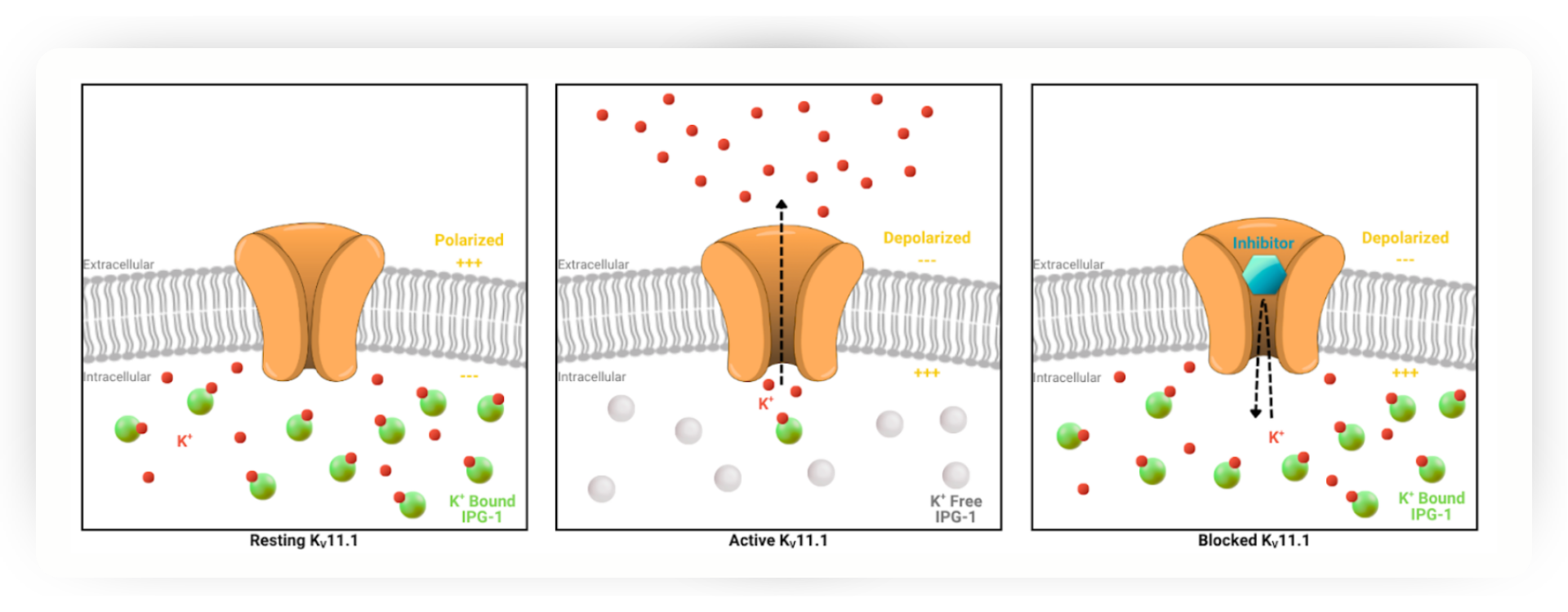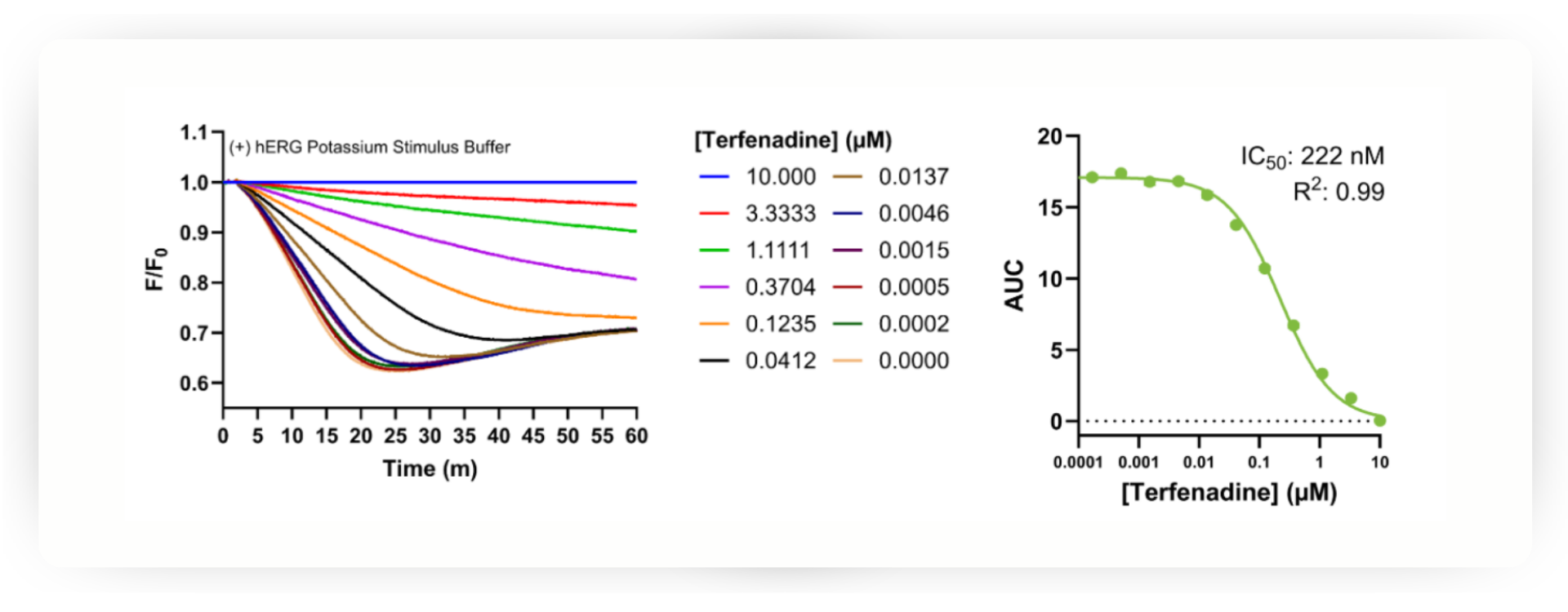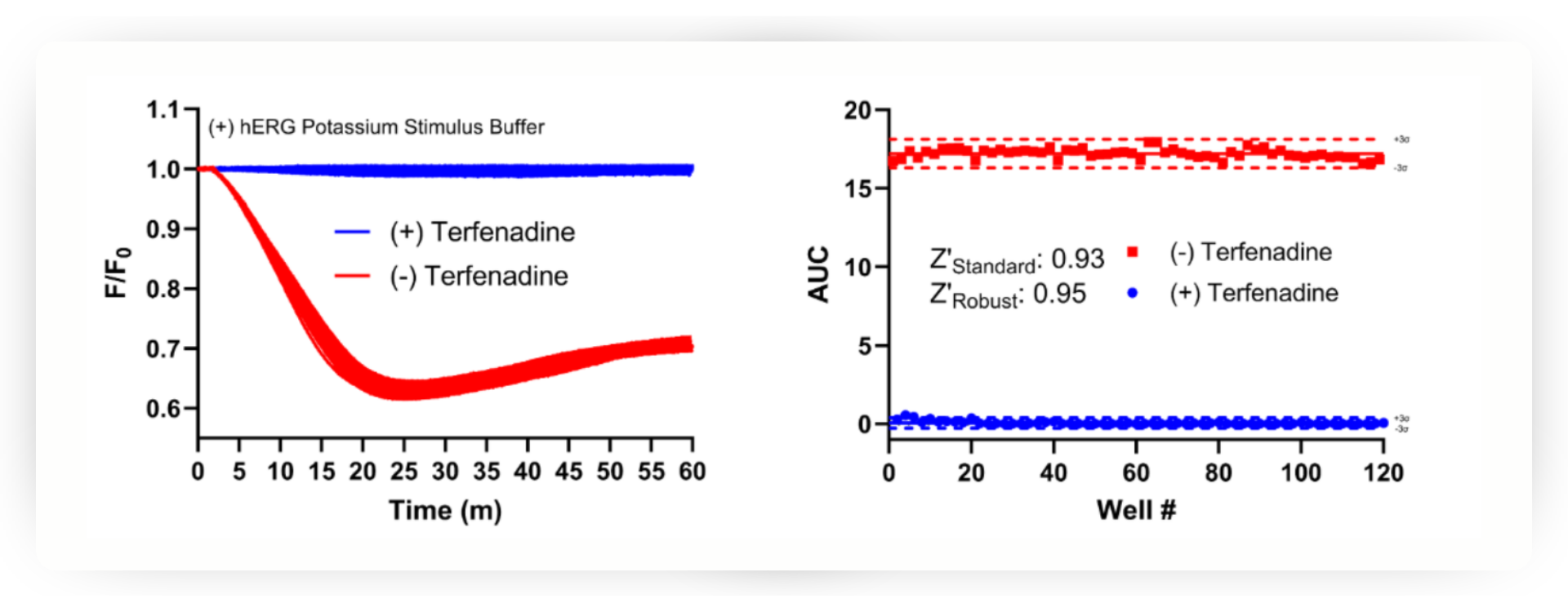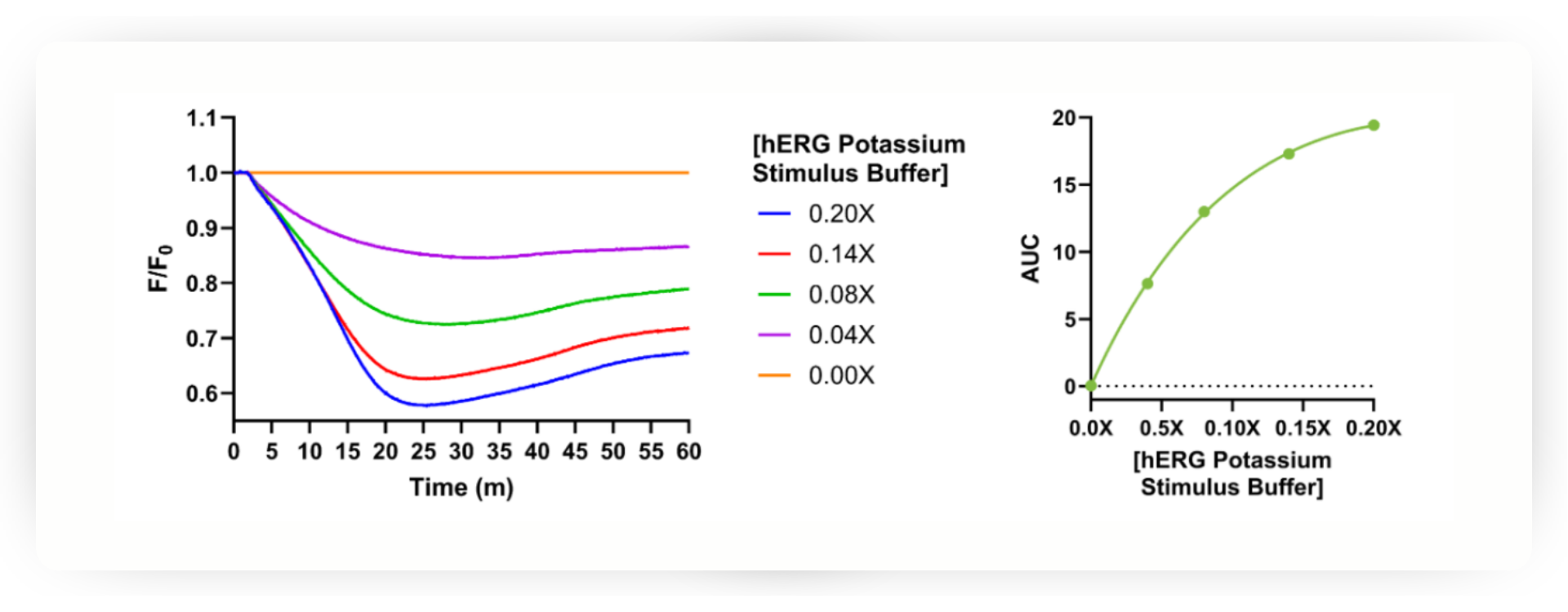$451.00 – $1,099.00Price range: $451.00 through $1,099.00
Thallium-free hERG Potassium Channel Assay is the first fluorescence-based, potassium channel solution that directly measures potassium flux, enabling you to move away from thallium-containing products. This product features the potassium-sensitive dye, IPG-1 AM, our lowest affinity potassium indicator to measure changes in intracellular potassium concentration. This kit is optimized for hERG screening (Kv11.1), and can be used to identify activators and inhibitors of hERG channels.
Showing 1 - 2 out of 2
Page 1 out of 1
| Variation | SKU | Price | Quantity | Action |
|---|---|---|---|---|
|
Size: pIONeer Kit - 2 plates
|
12100-2
|
$451.00
|
|
|
|
Size: Flex Kit - 10 plates
|
12100-10
|
$1,099.00
|
|
ION Assurance – We guarantee product quality. If you’re unsatisfied with your order, send us an email at support@ionbiosciences.com. We’ll promptly address your concern and replace, credit, or refund your items according to our ION Assurance terms and conditions.
To facilitate safer and physiologically relevant evaluation of hERG channel activity, ION Biosciences has developed a Thallium-Free hERG Potassium Channel Assay utilizing ION Potassium Green 1 AM (IPG-1 AM), a membrane-permeable, fluorescent dye sensitive to intracellular potassium levels.
Upon membrane depolarization, hERG channels open and mediate potassium efflux, causing a decrease in intracellular potassium concentration. This drop in intracellular potassium levels is detected in real time as a reduction in IPG-1 fluorescence intensity, providing a direct measure of channel function.
This direct-readout eliminates the need for surrogate ions or radioactive tracers and enables robust, high-throughput screening to identify hERG modulators in 96- and 384-well formats.

The Thallium-Free hERG Potassium Channel Assay provides reliable EC50/IC50 values and is ideally suited for pharmacological profiling, cardiotoxicity safety screening, and therapeutic discovery for hERG channels.
This kit has not yet been validated for use with additional voltage-gated potassium channels at this time.
All data displayed was generated using our stable HEK293 hERG cell line.
Identify inhibitors: Compounds that inhibit hERG activity, such as terfenadine, do not display a loss of fluorescence after treatment with a depolarizing stimulus solution to activate the channel.

Large screening windows in inhibitor modes with Z’ > 0.9 to enable reliable inhibitor detection.

Titrate stimulus solution for optimal screening windows: Adding different concentrations of the depolarizing stimulus solution can result in more channel activity and greater potassium efflux.
